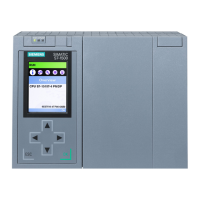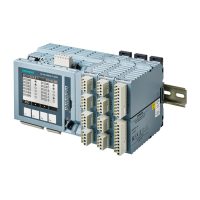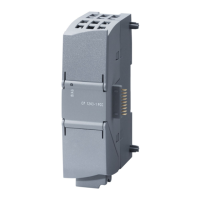Link-up and update
8.4 Special features in link-up and update operations
CPU 410-5H Process Automation/CPU 410 SMART
System Manual, 10/2013, A5E32631667-AA
121
Influences on time response
The period during which no I/O updates take place is primarily determined by the following
influencing factors:
● The number and size of data blocks modified during the update
● The number of instances of SFBs in S7 communication and of SFBs for generating block-
specific messages
● System modifications during operation
● Settings by means of dynamic quantity structures
● Expansion of distributed I/Os with PROFIBUS DP (a lower baud rate and higher number
of slaves increases the time it takes for I/O updates).
● Expansion of distributed I/Os with PROFINET IO (a higher update time and higher
number of devices increases the time it takes for I/O updates).
In the worst case, this period is extended by the following amounts:
● Maximum cyclic interrupt used
● Duration of all cyclic interrupt OBs
● Duration of high-priority interrupt OBs executed until the start of interrupt delays
Special features in link-up and update operations
Requirement for input signals during the update
Any process signals read previously are retained and not included in the update. The CPU
only recognizes changes of process signals during the update if the changed signal state
remains after the update is completed.
The CPU does not detect pulses (signal transitions "0 → 1 → 0" or "1 → 0 →1") which are
generated during the update.
You should therefore ensure that the interval between two signal transitions (pulse period) is
always greater than the required update period.
Communication links and functions
Connections on the master CPU are not be shut down. However, associated communication
jobs are not executed during updates. They are queued for execution as soon as one of the
following cases occurs:
● The update is completed, and the system is in the redundant state.
● The update and master/standby changeover are completed, the system is in solo
operation.
● The update was canceled (e.g., due to timeout), and the system has returned to solo
operation.
An initial call of communication blocks is not possible during the update.

